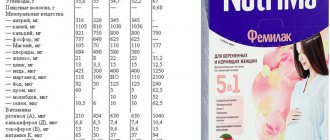pharmachologic effect
Ascorbic acid (vitamin C) is not formed in the human body, but comes only from food. Pharmacological effects: in quantities significantly exceeding the daily requirement (90 mg), it has almost no effect, with the exception of the rapid elimination of symptoms of hypo- and vitamin deficiency (scurvy). Physiological functions: is a cofactor in some hydroxylation and amidation reactions - transfers electrons to enzymes, providing them with a reducing equivalent.
Participates in the hydroxylation reactions of proline and lysine residues of procollagen with the formation of hydroxyproline and hydroxylysine (post-translational modification of collagen), the oxidation of lysine side chains in proteins with the formation of hydroxytrimethyllysine (in the process of kartinite synthesis), the oxidation of folic acid to folinic acid, the metabolism of drugs in liver microsomes and hydroxylation dopamine to form norepinephrine.
Increases the activity of amidating enzymes involved in the processing of oxytocin, antidiuretic hormone and cholecystokinin. Participates in steroidogenesis in the adrenal glands. The main role in tissues is participation in the synthesis of collagen, proteoglycans and other organic components of the intercellular substance of teeth, bones and capillary endothelium.
Pharmacokinetics
Communication with plasma proteins - 25%. The normal concentration of ascorbic acid in plasma is approximately 10 - 20 μg/ml. Easily penetrates into leukocytes, platelets, and then into all tissues; the highest concentration is achieved in the glandular organs, leukocytes, liver and lens of the eye; penetrates the placenta. The concentration of ascorbic acid in leukocytes and platelets is higher than in erythrocytes and plasma. In deficiency states, leukocyte concentrations decline later and more slowly and are considered a better measure of deficiency than plasma concentrations.
Metabolized primarily in the liver into deoxyascorbic acid and further into oxaloacetic acid and ascorbate-2-sulfate.
It is excreted by the kidneys, through the intestines, with sweat, breast milk unchanged and in the form of metabolites. When high doses are prescribed, the rate of elimination increases sharply. Smoking and drinking ethanol accelerate the destruction of ascorbic acid (conversion into inactive metabolites), sharply reducing reserves in the body. Excreted during hemodialysis.
Properties
Ascorbic acid enters the body along with the injection and spreads through the blood to all corners of the body. The highest concentration is achieved in the intrasecretory glands. Further, the vitamin has the following effect :
- Regulates immune reactions, increases the body's resistance to viruses and infections.
- Has anti-allergic and anti-inflammatory effects.
- Participates in the metabolism of cholesterol, amino acids, and also promotes the accumulation of glycogen in the liver.
- Accelerates the synthesis of hemoglobin in the body.
- Participates in the process of tissue respiration.
- Accelerates metabolic processes involving protein, fats and carbohydrates.
- Penetrates into platelets and leukocytes, and then into all tissues.
- After performing its assigned functions, it is excreted in feces, urine and sweat.
Indications for use
Treatment of hypo- and vitamin C deficiency (if it is necessary to quickly replenish vitamin C and the impossibility of oral administration). Used for medicinal purposes in all clinical situations associated with the need for additional administration of ascorbic acid, including: parenteral nutrition, diseases of the gastrointestinal tract (persistent diarrhea, resection of the small intestine, peptic ulcer, gastrectomy), Addison's disease.
In laboratory practice: for marking red blood cells (together with sodium chromate Cr51).
Overdose
If you take more than one gram per day, the following consequences are possible:
- diarrhea;
- heartburn;
- nausea;
- difficulty urinating;
- hemolysis.
When the first signs of an overdose appear, vitamin intake is stopped and the doctor must be notified of the incident.
Contraindications
Hypersensitivity, with long-term use in large doses (more than 500 mg) - diabetes mellitus, hyperoxaluria, nephrolithiasis, hemochromatosis, thalassemia, glucose-6-phosphate dehydrogenase deficiency.
Carefully
Sideroblastic anemia, urolithiasis.
Use during pregnancy and lactation
During pregnancy and lactation, they are used only if the expected benefit to the mother outweighs the potential risk to the fetus and child. The minimum daily requirement for ascorbic acid in the II-III trimesters of pregnancy is about 60 mg. It should be borne in mind that the fetus can adapt to high doses of ascorbic acid taken by a pregnant woman, and then the newborn may develop ricochet scurvy syndrome. With long-term use of large doses, inhibition of the function of the pancreatic insular apparatus is possible, so it must be regularly monitored during treatment. In patients with high iron levels in the body, ascorbic acid should be used in minimal doses. Ascorbic acid, as a reducing agent, can distort the results of various laboratory tests (the content of glucose, bilirubin in the blood and urine, the activity of “liver” transaminases and lactate dehydrogenase).
Impact on the ability to drive vehicles and operate machinery
During the treatment period, care must be taken when driving vehicles and engaging in potentially hazardous activities that require increased concentration and speed of psychomotor reactions.
Buy Ascorbic acid injection solution 50 mg/ml 2 ml No. 10 in pharmacies
Ascorbic acid Buy Ascorbic acid in pharmacies DOSAGE FORMS solution for intravenous and intramuscular administration 50 mg/ml injection solution 5%
MANUFACTURERS Armavir Biological Factory (Russia) Biosynthesis JSC (Russia) Biochemist JSC (Russia) Borisov Medical Preparations Plant (Russia) Dalkhimfarm (Russia) Microgen NPO (Virion NPO) Tomsk (Russia) Moskhimfarmpreparaty im. ON THE. Semashko (Russia) Novosibkhimpharm (Russia) Sanitas JSC (Lithuania) Endokrininyai Preparatai (Lithuania)
GROUP Ascorbic acid (vitamin C) group
COMPOSITION Active ingredient: Ascorbic acid.
INTERNATIONAL NON-PROPENTED NAME Ascorbic acid
SYNONYMS Additive Vitamin C, Asvitol, Ascorbic acid (Vitamin C), Ascorbic acid-Vial, Ascorbic acid-UBF, Vaginorm-C, Vitamin C, Vitamin C “Dinosaurs”, Vitamin C natural “Megavit C”, Vitamin C natural “Vitamin” C", Vitamin C Nycomed, Vitamin C1000, Ascorbic acid (Vitamin C), Ledis formula "Vitamin C plus", Rostvit, Celascon vitamin C, Celascon Effervescens
PHARMACOLOGICAL EFFECT: Replenishes vitamin C deficiency, metabolic, regulates redox processes, antioxidant. Absorbed in the small intestine (duodenum, partially in the ileum). Excreted in urine, feces, sweat, and breast milk. Smoking and drinking ethyl alcohol accelerate destruction, sharply reducing reserves in the body. Has pronounced antioxidant properties. Regulates hydrogen transport in many biochemical reactions, improves the use of glucose in the tricarboxylic acid cycle, participates in the formation of tetrahydrofolic acid and tissue regeneration, the synthesis of steroid hormones, collagen, procollagen. Maintains normal capillary permeability. Activates proteolytic enzymes, participates in the metabolism of aromatic amino acids, pigments and cholesterol, promotes the accumulation of glycogen in the liver. Improves bile secretion, restores exocrine function of the pancreas and endocrine function of the thyroid gland. Regulates immunological reactions, promotes phagocytosis, increases the body's resistance to infections. Has anti-inflammatory and anti-allergic effects.
INDICATIONS FOR USE Hypovitaminosis C, hemorrhagic diathesis, capillary toxicosis, hemorrhagic stroke, bleeding (nasal, pulmonary, uterine, etc.), infectious diseases, intoxication, alcoholic and infectious delirium, acute radiation sickness, post-transfusion complications, liver diseases (Botkin's disease, chronic hepatitis and cirrhosis), gastrointestinal tract (achilya, peptic ulcer, especially after bleeding, enteritis, colitis, helminthiasis), cholecystitis, adrenal insufficiency (Addison's disease), sluggishly healing wounds, ulcers, bone fractures, dystrophy, physical and mental overload, pregnancy and lactation , hemosiderosis, melasma, erythroderma, psoriasis, chronic common dermatoses. As an antioxidant - atherosclerosis, bronchial asthma, diffuse connective tissue diseases (rheumatoid arthritis, systemic lupus erythematosus, scleroderma), etc.; overdose of anticoagulants, poisoning with aconite, anesthesin, aniline, antabuse, barbiturates, benzene, dichloroethane, potassium permanganate, methyl alcohol, arsenic, carbon monoxide, hydrocyanic acid, sulfonamides, thallium, phenols, quinine.
CONTRAINDICATIONS Hypersensitivity, thrombophlebitis, tendency to thrombosis, diabetes mellitus.
SIDE EFFECTS Irritation of the gastrointestinal mucosa (nausea, vomiting, diarrhea), arterial hypertension, metabolic disorders, inhibition of the function of the insular apparatus of the pancreas (hyperglycemia, glycosuria) and glycogen synthesis, reduces capillary permeability and deterioration of tissue trophism, thrombocytosis, hyperprothrombinemia, thrombus formation, erythrocytopenia , neutrophilic leukocytosis, myocardial dystrophy, damage to the glomerular apparatus of the kidneys, allergic reactions (including anaphylactic shock); with long-term use, the formation of urinary stones, disturbances in the metabolism of zinc and copper, increased excitability of the central nervous system, sleep disturbance, and the development of microangiopathies.
INTERACTION Increases blood concentrations of salicylates (increases the risk of crystalluria), ethinyl estradiol, benzylpenicillin and tetracyclines, reduces oral contraceptive use. Reduces the anticoagulant effect of coumarin derivatives. Improves the absorption of iron preparations in the intestines. Increases the total Cl of ethyl alcohol. Quinoline drugs, calcium chloride, salicylates, and corticosteroids deplete vitamin C reserves when used for a long time.
METHOD OF APPLICATION AND DOSAGE IM and IV -1-5 ml, for poisoning - up to 60 ml.
OVERDOSE No data available.
SPECIAL INSTRUCTIONS During long-term treatment, monitoring of renal function, blood pressure and glucose levels is necessary (especially when prescribing high doses). Ascorbic acid, as a reducing agent, can distort the results of various laboratory tests (blood glucose, bilirubin, transaminase activity, LDH).
STORAGE CONDITIONS: In a dry place, protected from light, at room temperature.
Directions for use and doses
Intravenous, intramuscular (slow), adults from 100 to 500 mg (2 - 10 ml of 50 mg/ml solution or 1 - 5 ml of 100 mg/ml solution) per day, for the treatment of scurvy - up to 1000 mg per day.
Children from 100 to 300 mg (2 - 6 ml of 50 mg/ml solution or 1 - 3 ml of 100 mg/ml solution) per day, for the treatment of scurvy - up to 500 mg (10 ml of 50 mg/ml solution or 5 ml of 100 mg/ml solution mg/ml) per day.
To mark red blood cells (together with sodium chromate Cr51), 100 mg of ascorbic acid is injected into a vial with sodium chromate Cr51.
Injection doses
To avoid negative consequences, decide on the time of administration and dosage of vitamin C. The instructions for use in ampoules are as follows.
For the treatment of diseases it is prescribed:
- Adults - 0.05-0.2 grams . If the composition is taken orally, the frequency of use is 4-5 times a day after meals. In the case of intravenous (intramuscular) administration, a 5% solution of sodium ascorbate is used. The dosage in this case is 1-5 ml, and the frequency of injections is 1-3 times a day, depending on the doctor’s prescriptions and the purpose of administration.
- Children are prescribed to eliminate the deficiency in a dosage of 0.03-0.05 grams . In the case of injections, 0.6-1.0 ml of a 5% solution is administered once a day.
The duration of treatment depends on the severity of the disease, its type and the effect of preliminary complex treatment.
The drug is also prescribed for preventive purposes. Here the dosages are as follows:
- Adults - 0.05-1 grams per day (taken orally).
- For children - for parenteral administration, 5% solution is used in a volume of 1-2 ml once a day . The course of treatment is 14-21 days.
When treating with vitamin C, the maximum dosage must be taken into account:
- For adults, a single dose is no more than 0.2 g , and a daily dose is no more than 0.5 grams .
- In children, the maximum dosage depends on age. So, at 6 months the maximum portion per day is 30 mg , and at 14 years old - 50 mg .
The introduction of ascorbic acid is possible:
- inside;
- intramuscularly.
Side effect
From the central nervous system: with rapid intravenous administration - dizziness, feeling of fatigue; with long-term use of large doses (more than 1 g) - headache, increased excitability of the central nervous system, insomnia.
From the urinary system: moderate pollakiuria (when using a dose of more than 600 mg/day), with long-term use of large doses - hyperoxaluria, nephrolithiasis (from calcium oxalate), damage to the glomerular apparatus of the kidneys.
From the cardiovascular system: with long-term use of large doses - a decrease in capillary permeability (possible deterioration of tissue trophism, increased blood pressure, hypercoagulation, development of microangiopathies).
Allergic reactions: allergic reactions up to the development of anaphylactic shock.
Laboratory indicators: thrombocytosis, hyperprothrombinemia, erythropenia, neutrophilic leukocytosis, hypokalemia, glycosuria.
Local reactions: pain at the site of intramuscular injection.
Other: with long-term use of large doses (more than 1 g) - inhibition of the function of the insular apparatus of the pancreas (hyperglycemia, glycosuria), with intravenous administration - threat of miscarriage (due to estrogenemia), hemolysis of red blood cells.
Overdose
Symptoms: nephrolithiasis, insomnia, irritability, hypoglycemia.
Treatment: symptomatic, forced diuresis.
Interaction with other drugs
Pharmaceutically incompatible with aminophylline, bleomycin, cefazolin, cefapirin, chlordiazepoxide, estrogens, dextrans, doxapram, erythromycin, methicillin, nafcillin, benzylpenicillin, warfarin.
Increases the concentration of benzylpenicillin and tetracyclines in the blood; at a dose of 1 g/day increases the bioavailability of ethinyl estradiol (including that included in oral contraceptives). Reduces the effectiveness of heparin and indirect anticoagulants.
When used simultaneously with acetylsalicylic acid, the urinary excretion of ascorbic acid increases and the excretion of acetylsalicylic acid decreases.
Increases the risk of developing crystalluria during treatment with salicylates and short-acting sulfonamides, slows down the excretion of acids by the kidneys, increases the excretion of drugs that have an alkaline reaction (including alkaloids), and reduces the concentration of oral contraceptives in the blood. Increases the overall clearance of ethanol, which in turn reduces the concentration of ascorbic acid in the body.
Quinoline drugs, calcium supplements, salicylates, and glucocorticosteroids deplete ascorbic acid reserves when used for a long time.
When used simultaneously, it reduces the chronotropic effect of isoprenaline.
With long-term use or use in high doses, it may interfere with the interaction of disulfiram and ethanol. In high doses, it increases the excretion of mexiletine by the kidneys. Barbiturates and primidone increase the excretion of ascorbic acid in the urine.
Reduces the therapeutic effect of antipsychotic drugs (neuroleptics) - phenothiazine derivatives, tubular reabsorption of amphetamine and tricyclic antidepressants.
The use of vitamin C in ampoules in cosmetology
The ampoule form of ascorbic acid is used not only in the treatment of “internal” diseases and the prevention of vitamin deficiency, but also for cosmetic purposes. The positive effect of the vitamin on the skin has been proven - it becomes more elastic, wrinkles disappear. The tablet form is also used (after grinding into powder).
Thanks to the saturation with vitamin C, the skin better accepts peelings, absorbs the beneficial substances of masks, and responds faster to moisturizing and nourishing creams. Ascorbic acid in ampoules is more often used in professional cosmetology, but when used correctly it provides no less results at home. Its action:
- improvement of complexion;
- elimination of pimples and blackheads;
- skin cell renewal;
- normalization of epidermal nutrition;
- elimination of peeling, redness, dilated capillaries.
To achieve the best results, it is recommended to follow the following recommendations :
- The combination of vitamins E, C and A provides a more powerful effect. It is recommended to mix the elements and apply them as part of a general mask.
- The use of fortified formulations is not recommended if there is damage to the skin. Do not apply it in its pure form to the delicate areas around the eyes.
- Combining vitamin C and fresh fruits is an opportunity to enhance the effect of the mask.
- Frequent use of ascorbic acid mixed with glucose is not recommended. If you choose a treatment product, you should give preference to the “clean” option.
- When mixing ingredients during the preparation of a mask, the use of metal containers is prohibited. Otherwise, ascorbic acid is destroyed. For the same reason, the use of metal spoons for stirring is prohibited.
- Before using the composition, it is recommended to cleanse the skin of other cosmetics.
- The optimal time for a mask is before bed.
Use caution when applying liquid vitamin to the eye area. To achieve results, mix ascorbic acid with additional ingredients - unsweetened yogurt, sugar and neroli oil. Apply the composition after complete dissolution using a cotton swab. The shelf life of the mask is no more than a week.
If after application there is a burning sensation, redness of the skin, swelling and other problems, immediately wash off the mask with warm water and do not use the composition again. An allergic reaction is possible both when using pure and when applying mixed formulations.
Vitamin C has a positive effect on hair . It is allowed to use any mask followed by the addition of ascorbic solution. The principle of application is simple. Apply the prepared composition to your hair, hold it for 30 minutes, then rinse. To simplify the task, you can purchase a ready-made mask and add vitamin C to it. As for mixing with shampoo, this does not make sense due to the short exposure time on the scalp.



